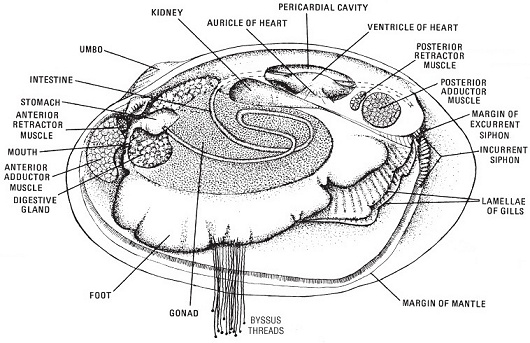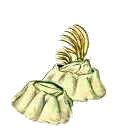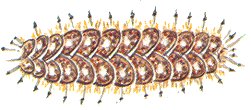Mussels
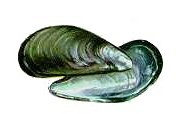
Mussels are found everywhere, attached to any solid substrate. Mussels are to the sea what grass is to suburbia. Mussels lack the muscular foot of clams or the large hinge muscle of scallops. Instead, they have a "beard" of tough fibers near the hinge with which they attach themselves.
The Blue Mussel Mytilus edulis, to 4" is the edible mussel. The similar Horse Mussel Modiolus modiolus grows to 6", and is considered inedible. Both types are found from the intertidal zone down to the depths. See entry on barnacles.
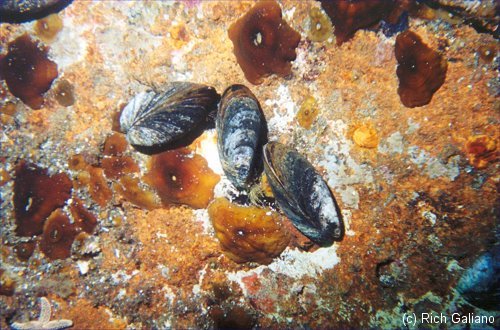
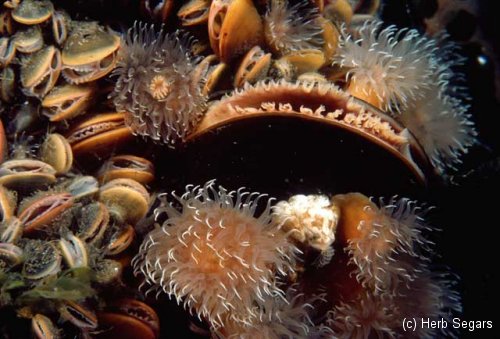
The other common type of mussel in our area is the Ribbed Mussel Modiolus demisus, to 4". The Ribbed Mussel is roughly the same shape as the Blue Mussel, but has a ribbed shell instead of smooth. It is usually found in brackish water, in bays, estuaries, and marinas, and is inedible. Freshwater Zebra Mussels are more closely related to clams.

